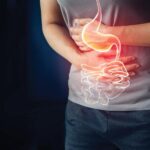The technique of “conception in vitro” raises many questions for expectant parents. Let’s discuss the main ones.
What is the difference between an artificial pregnancy and a natural one?
- The exact date of conception is known.
- After natural conception, a woman learns about her situation “after the fact” by discovering a delay in menstruation.
- In turn, with artificial insemination, a woman knows the date and even the time of fertilization.
- Attentive attitude to your own health.
- During a natural pregnancy, before its confirmation, a woman is not aware of her situation and actively exercises or even keeps bad habits (drinking alcohol, smoking).
- Mandatory support with progesterone-containing medications.
- Women with indications for IVF, after fertilization, must take these drugs to 12-16, and in some cases up to 20 weeks, until the body begins to produce this hormone itself. While in natural pregnancy, additional progesterone support is needed only in extreme cases, when there is a threat of miscarriage.
- During conception by means of IVF, weak pains in the abdomen, uterus, ovaries may occur, which pass with time. This happens due to stimulation and puncture of ovaries, embryo replanting.
- In other matters, the process of artificial pregnancy is practically the same as natural pregnancy. The woman can also experience changes in her mood, taste preferences, and other natural changes in her body.
If you are interested in costs of surrogacy, we advise you USA-based company Delivering Dreams.
What are the chances of pregnancy?
When diagnosing infertility, it is important to choose the right tactic for the protocol. The success of fertilization depends on it. Other factors include:
- A woman’s hormonal background;
- the health characteristics of the partners;
- the age of the woman;
- a number of replants – the more, the greater the likelihood of success.
Many reproductive specialists consider age to be a decisive factor, and WHO representatives provide statistics in this regard:
- For women under the age of 25, the probability of embryo engraftment is 48-50%.
- At 26-35 years old – about 35%.
- At 36-40 years old – about 25%.
- At 41-45 years old – about 10%.
- Over 45 years old – 3%.
If fertilization is successful, more often than one embryo takes root. Typically, births end on time or ahead of schedule by 1-3 weeks by cesarean section in 65% of cases.
What affects the result of the procedure?
A woman should carefully monitor her health condition. When planning IVF, special attention should be paid to past and chronic diseases of the reproductive system.
Often the probability of embryo engraftment is extremely low if there have been frequent inflammatory diseases:
- Pelvic organs;
- uterine appendages;
- sigmoid, rectum, cecum;
- bladder.
In this case, over time, adhesions form, they hamper the patency and mobility of the female organs. On the other hand, an increased frequency of inflammations leads to constant changes in pH, which makes it difficult for the embryo to survive in the endometrium.
Other reasons affecting a positive IVF outcome include:
- Uterine curettage, abortions – interventions affect the integrity of the endometrium and other layers of the uterus. The hypothalamus, the endocrine organ, suffers the main “blow” because there is a sudden change in the balance of sex hormones, there is stress due to the surgical intervention. All this affects the implantation of the embryo or the subsequent pregnancy.
- Disrupted sperm formation of the partner. The pathology is observed in men who receive long-term toxic effects on the body from drugs, tobacco use, alcohol, manufacturing. Less common are decreased testosterone levels, avitaminosis, especially the lack of vitamins E, A, B, C, affecting sperm formation. Lack of sufficient and quality sperm formation is often observed in men after experiencing inflammatory diseases of the reproductive organs.
- Reduced follicular reserve. The number of oocytes (oocytes) is laid during intrauterine development. During birth, the number of oocytes decreases, depending on the course of the birth, the harder it went, the fewer cells are retained. After reaching childbearing age, the oocytes are consumed gradually, they mature every menstrual cycle. Oocytes are consumed faster if a woman is exposed to the negative effects of production, food poisons periodically carry pelvic diseases. Follicular reserve level is influenced by age – the older a woman is, the lower is the probability of successful IVF.











